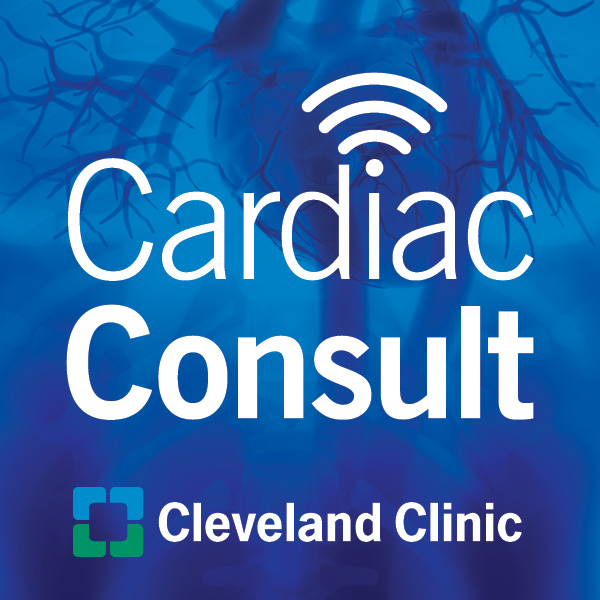
Cardiac Consult
A Cleveland Clinic podcast exploring heart, vascular and thoracic topics of interest to healthcare providers: medical and surgical treatments, diagnostic testing, medical conditions, and research, technology and practice issues.
Subscribe:

Featured Episode
Optimizing Outcomes for Lung Failure Treatment and Transplant
Kenneth McCurry, MD, and Marie Budev, DO, share Cleveland Clinic’s multidisciplinary approach to managing end-stage lung disease and advancing lung transplantation.
Play NowAll Cardiac Consult Episodes
December 11, 2025
Cleveland Clinic's New Cardioimmunology Center
Samir Kapadia, MD and David Zidar, MD, PhD introduce Cleveland Clinic’s Cardioimmunology Center, a new initiative focused on the intersection of immune pathways and cardiovascular disease.
Play NowDecember 4, 2025
Guidelines and Innovations Shaping Peripheral Artery Disease Treatment
Lee Kirksey, MD, Aravinda Nanjundappa, MBBS, MD, and G. Jay Bishop, MD, discuss a multidisciplinary approach to peripheral artery disease (PAD) management. They explore evidence-based strategies including early detection, optimal medical therapy, supervised exercise programs and advanced endovascular and surgical interventions, emphasizing team-based care and longitudinal follow-up for improved outcomes.
Play NowNovember 26, 2025
American College of Cardiology Concise Clinical Guidance on Pericarditis
Allan Klein, MD, and Tom Kai Ming Wang, MBChB, discuss the 2025 ACC Concise Clinical Guidance on pericardial disease.
Play NowNovember 20, 2025
Expertise in Valve-Sparing Aortic Root Replacement
Lars Svensson, MD, PhD, and Xiaoying Lou, MD, share valve-sparing aortic root surgery, that preserves the patient’s native valve while treating aortic aneurysms.
Play Now


